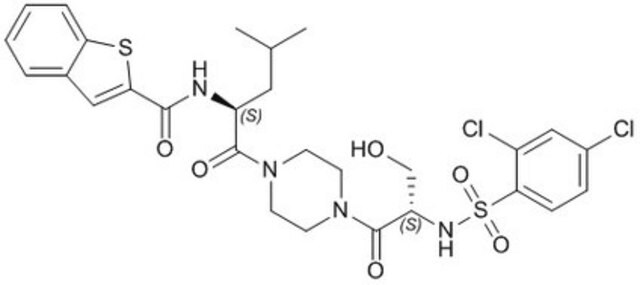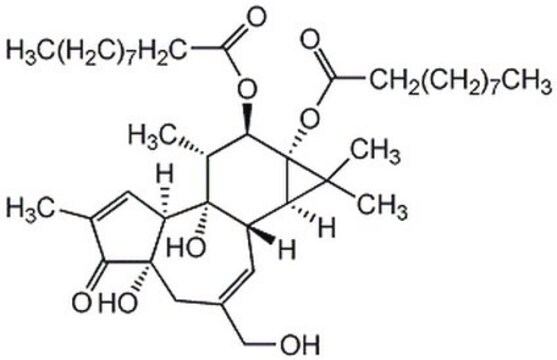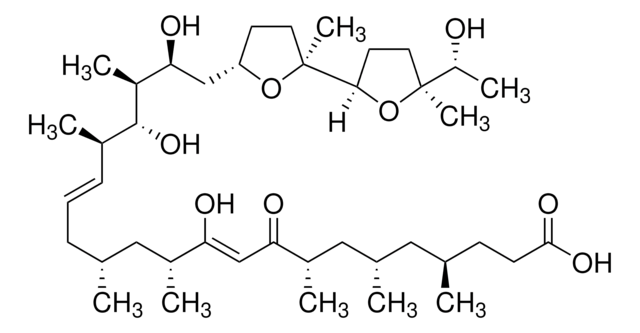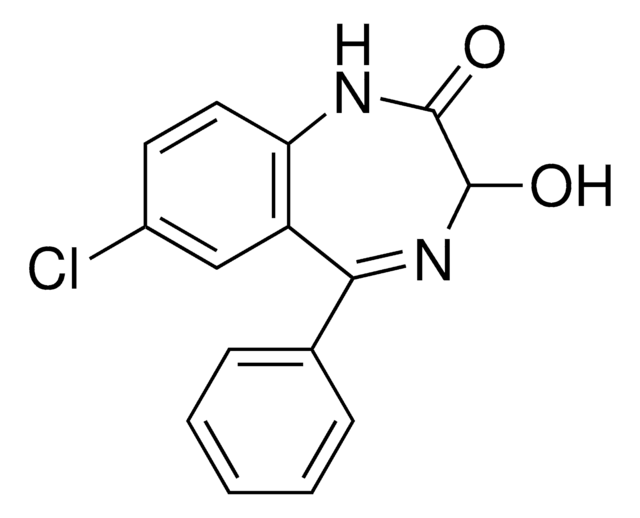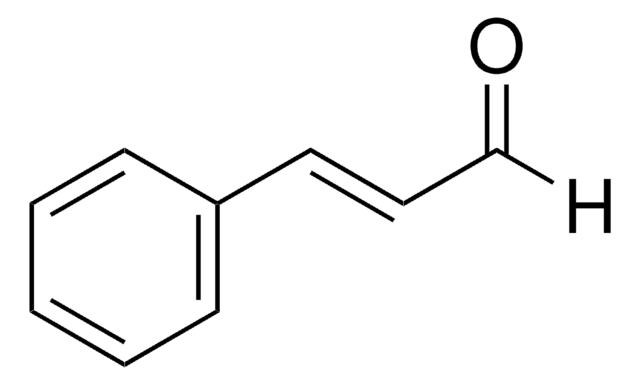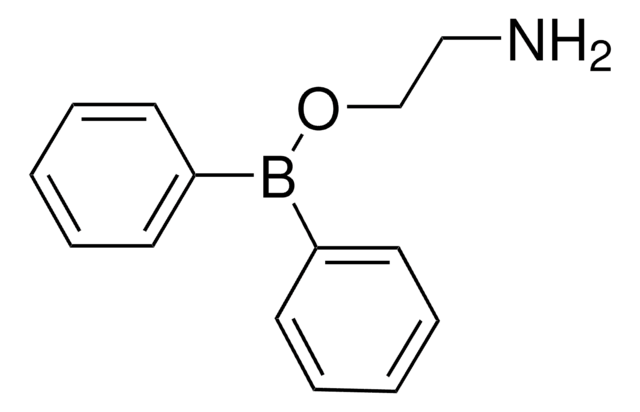P8014
4α-Phorbol 12,13-didecanoate
solid
Synonym(s):
4α-Phorbol 12-13-dicaprinate, 4αPDD
About This Item
Recommended Products
form
solid
Quality Level
color
white
solubility
DMSO: soluble
ethanol: soluble
methanol: soluble
storage temp.
−20°C
SMILES string
CCCCCCCCCC(=O)O[C@@H]1[C@@H](C)[C@@]2(O)C(C=C(CO)C[C@]3(O)C2C=C(C)C3=O)C4C(C)(C)[C@]14OC(=O)CCCCCCCCC
InChI
1S/C40H64O8/c1-7-9-11-13-15-17-19-21-32(42)47-36-28(4)39(46)30(24-29(26-41)25-38(45)31(39)23-27(3)35(38)44)34-37(5,6)40(34,36)48-33(43)22-20-18-16-14-12-10-8-2/h23-24,28,30-31,34,36,41,45-46H,7-22,25-26H2,1-6H3/t28-,30+,31-,34-,36-,38+,39-,40-/m1/s1
InChI key
DGOSGFYDFDYMCW-OEFRVDPMSA-N
Looking for similar products? Visit Product Comparison Guide
Application
- to study its effects on Madin-Darby canine kidney (MDCK) cells
- to study its effects on Ca2+ influx in mice fallopian tubal cells
- to study its effects on hind paw swelling in mice
Biochem/physiol Actions
Caution
Reconstitution
Signal Word
Danger
Hazard Statements
Precautionary Statements
Hazard Classifications
Acute Tox. 1 Dermal - Acute Tox. 1 Inhalation - Acute Tox. 2 Oral - Carc. 2 - Resp. Sens. 1 - Skin Corr. 1B - Skin Sens. 1
Storage Class Code
6.1A - Combustible acute toxic Cat. 1 and 2 / very toxic hazardous materials
WGK
WGK 3
Flash Point(F)
Not applicable
Flash Point(C)
Not applicable
Personal Protective Equipment
Choose from one of the most recent versions:
Already Own This Product?
Find documentation for the products that you have recently purchased in the Document Library.
Customers Also Viewed
Articles
Cancer research has revealed that the classical model of carcinogenesis, a three step process consisting of initiation, promotion, and progression, is not complete.
Our team of scientists has experience in all areas of research including Life Science, Material Science, Chemical Synthesis, Chromatography, Analytical and many others.
Contact Technical Service


